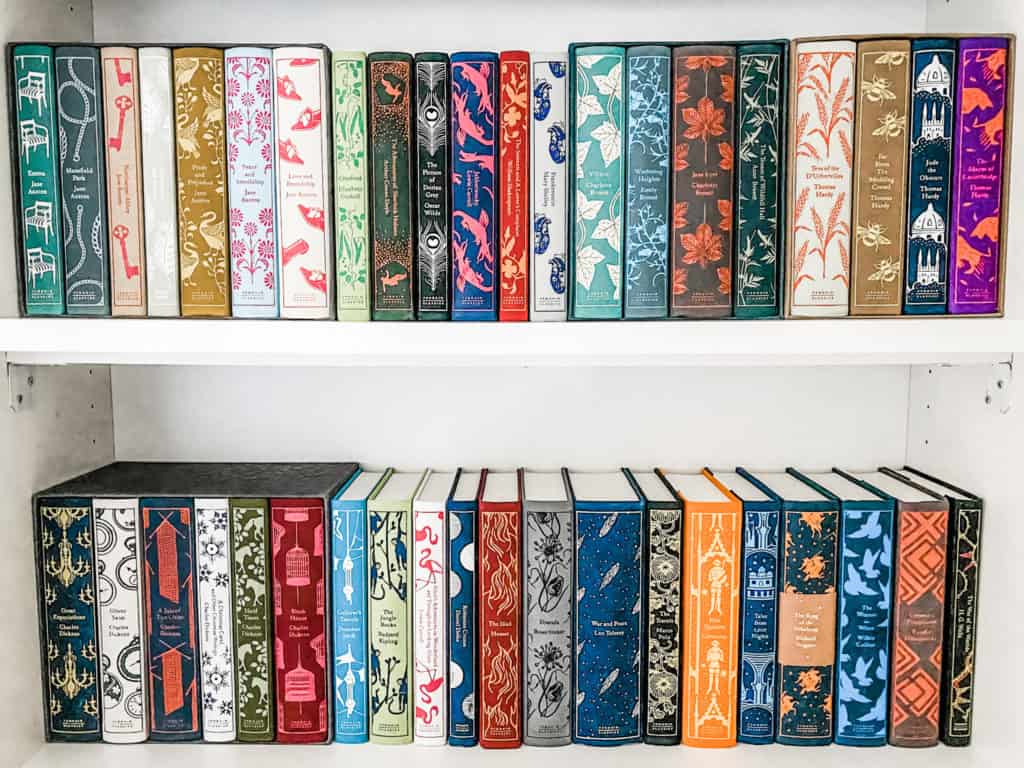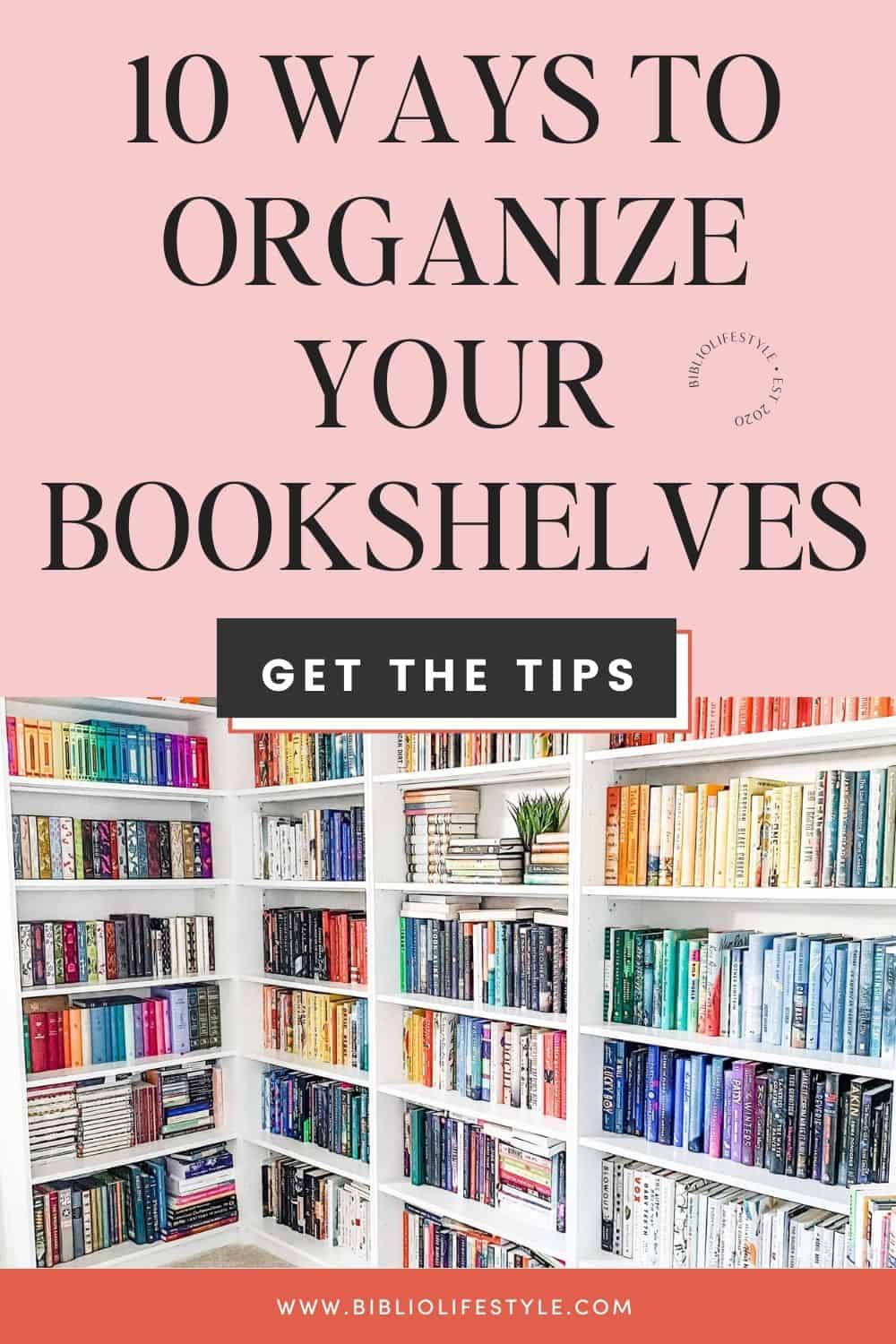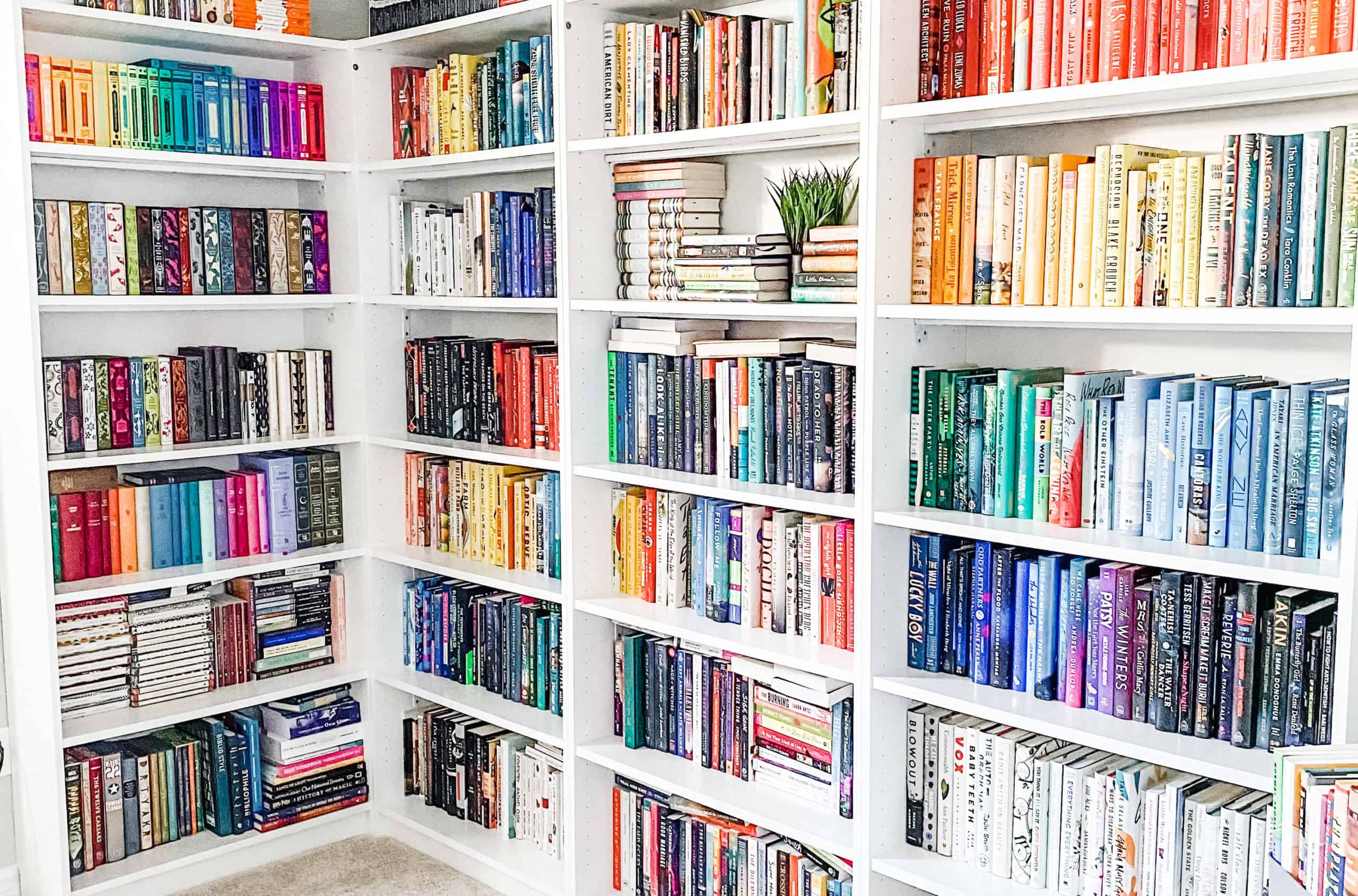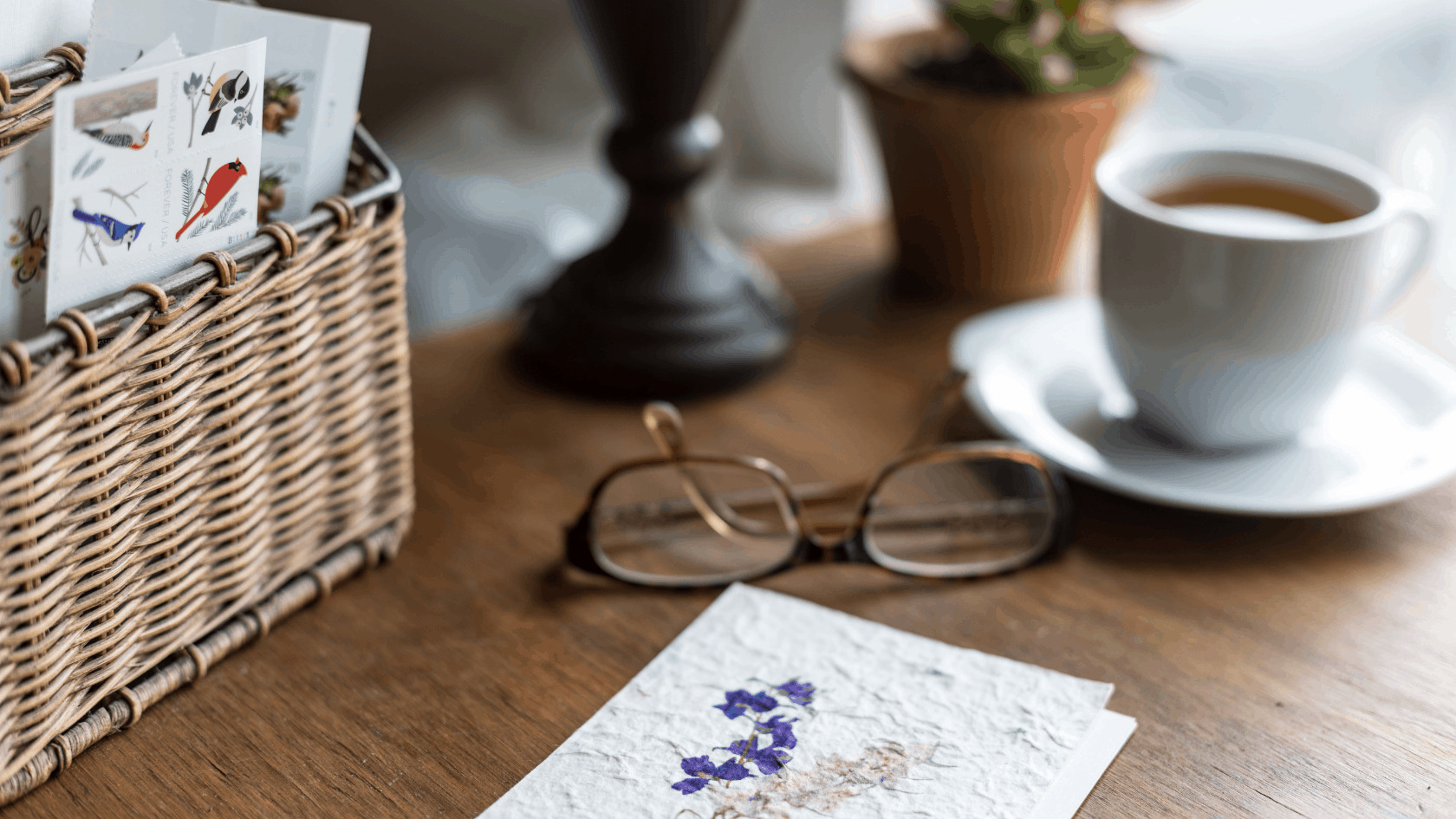Last Updated on February 21, 2024 by BiblioLifestyle

Are your bookshelves overflowing with books? Do you have a hard time finding the book (or even worse, multiple books) that you need at a particular moment? If that’s the case, it may be time to do some bookshelf organization. Organizing your bookshelf can help make your room look neater and enable easier access to all of the knowledge stored away on their pages. In this article, we will take a look at ten different methods of bookshelf organization. So when you organize or reorganize your bookshelves, you will create an aesthetically pleasing space in which to browse through your books. Not only are organized bookshelves satisfying, but they also allow you to find what you need quickly! So let’s get started – read on for our top ten tips on organizing your bookshelves!
Why is bookshelf organization important?
Bookshelf organization and having a solid book organization system is beneficial for multiple reasons. It makes finding the books you’re looking for easier and increases the odds of selecting a book to read. If you’re like me, it also makes your shelves pleasing to the eye and can lift your spirits. Organized shelves also help to maximize space, and it’s the best way to accommodate a growing collection efficiently. In essence, organizing a bookshelf is akin to curating a personal library where the convergence of literature, form, and function occurs, thus enriching the overall reading experience.
How to organize your book collection?
Organizing your book collection does not need to be complicated or time-consuming – it can be enjoyable. The best part? You don’t have to stick to any one method. Instead, please feel free to mix and match or change things up as you discover what works for you. So let’s step up your bookshelf organization game with ten easy ways to organize your book collection – no professional bookseller or librarian experience is necessary!
10 Ways To Organize Your Bookshelf
ORGANIZE YOUR BOOKSHELF BY SEPARATING FICTION AND NONFICTION
Booksellers across the world universally use this method. Fiction books are found in one corner and nonfiction, plus everything else is located elsewhere. So if you’re looking for an easy bookshelf organization method, you can start here.
ORGANIZE YOUR BOOKSHELF BY AUTHOR
This method works best if you have multiple collected works from authors you love and or authors you plan on reading one day. To take it up a notch, you could also arrange the books by each author in order of publication.
ORGANIZE YOUR BOOKSHELF BY SEPARATING YOUR CLASSIC AND CONTEMPORARY BOOKS
How you define classics and contemporary is entirely personal and unique to each reader. Popular options include books written before a certain date, books published within a specific time, living and deceased authors, writing style, societal standards, and commercial usage.
ORGANIZE YOUR BOOKSHELF ACCORDING TO MOOD/ EMOTION
Maybe reading a book made you smile, laugh, or cry. Perhaps a book kept you up into the wee hours of the morning because you couldn’t stop turning the pages. Maybe a book ignited your passions, opened your eyes, or shattered your innocence. Perhaps you read a book that changed your life or one that didn’t leave an impression at all.
If you rate books or remember them based on your emotional experience, this method of organization is just the ticket.
ORGANIZE YOUR BOOKSHELF BY SEPARATING YOUR READ FROM UNREAD BOOKS
Gather all the books you haven’t read yet and sort them into their own unique to-be-read (TBR) piles. This way, they don’t get lost amongst all your other books.
The best part? When you need a book to read, you will always have that special section to find one or five books to choose from.

ORGANIZE YOUR BOOKSHELF ALPHABETICALLY
The alphabetical organization works best if you remember titles and authors better than genres or book covers. The larger your book collection, the more ideal this method may be.
ORGANIZE YOUR BOOKSHELF BY SEPARATING HARDBACK AND PAPERBACK BOOKS
This method is ideal for a cleaner and streamlined look on your bookshelves.
ORGANIZE YOUR BOOKSHELF BY GENRE OR SUBJECT MATTER
Organizing books by genre or subject matter is a great way to find books based on your current reading interests. So whether you’re in the mood for historical fiction, romance, or even a memoir – you’ll know where to find them.
ORGANIZE YOUR BOOKSHELF BY COLOR
The color organization strategy is ideal if you remember books and associate specific titles with the cover design or love vibrantly colored bookshelves that make a statement.
The best part? It’s the perfect opportunity to get creative.
ORGANIZE YOUR BOOKSHELF BY SEPARATING YOUR FAVORITE BOOKS
Your favorite books tend to be the ones you may want to re-read every so often or quote during a discussion. So instead of lumping all your books together, separate all your favorite from all the rest and put them center stage.

Additional Bookshelf Organization Tips To Consider
Organize books by height
Arranging books by height can lead to an aesthetically pleasing shelf where symmetry plays an essential role. Begin by placing the tallest books at one end of the shelf and gradually decreasing the height as you move to the other end, creating a visually smooth slope or a stepped appearance. This method can accentuate the clean lines of a bookshelf and lends itself well to a minimalist or modern interior design scheme. However, it’s also practical, as it keeps similarly sized books together, which can protect smaller ones from being squashed or overshadowed by larger volumes.
Don’t be afraid to stack books next to your rows
Stacking books horizontally next to your vertically aligned rows offers not only a solution to space constraints but also adds a dynamic texture to the overall look of your bookshelf. It creates pockets of interest and breaks the monotony of continuous rows. Moreover, this approach has practical benefits too: Horizontal stacks can serve as makeshift bookends, anchoring the vertical rows in place. It’s an effective way to display oversized or unusually shaped books that might otherwise be awkward to accommodate. Utilize this method to highlight beautiful cover art or to keep your currently reading pile within easy reach for that next cozy reading session.
Put heavier books on lower shelves
When organizing your bookshelf, it’s practical to place heavier books on the lower shelves. This strategy not only ensures the stability of the shelving unit but also reduces the risk of heavy tomes toppling over, which could cause injury or damage to your collection. Books with substantial weight, like encyclopedias and large art volumes, benefit from being closer to the ground, providing a solid foundation for your bookshelf. This method also adheres to ergonomic principles, saving you from having to reach or strain when accessing these weightier reads. Beyond functionality, situating heavier books at the bottom can ground the aesthetic of your bookshelf, providing a visual anchor and a sense of balance.
Make a trip to your local hardware or home goods store and reinforce your bookshelves, paint, or even decorate them
To ensure the longevity and resilience of your bookshelves, a visit to your local hardware or home goods store can be instrumental. Look for brackets or reinforcement strips to bolster shelf stability, especially if you’re housing an extensive collection of hefty tomes. Beyond structure, consider updating the look with a fresh coat of paint – choose a color that complements your room or opt for a bold contrast to make your bookshelf a focal point. Perhaps browse for decorative elements such as ornamental brackets, patterned liners, or lighting solutions to add ambiance and character to your space. These small modifications can dramatically enhance the appeal and functionality of your shelving, making your reading corner both a comfortable and stylish retreat.
If you’re feeling generous, donate to your local used bookstore, library bookshop, thrift, or charity shop
Donating to your local used bookstore, library bookshop, thrift store, or charity shop is not only an act of generosity but also a meaningful contribution to your community. By rehoming your gently read books, you provide others with the opportunity to discover new stories and ideas, often at a fraction of the cost. Such establishments often support community programs, literacy initiatives, or charitable causes, so your donations may go further than you think. Before you donate, ensure that your books are in good condition – free from severe damage, excessive marking, or mildew. This ensures that they can find a second life with a new reader and contribute to the cycle of book sharing and appreciation.

Frequently Asked Questions About Bookshelf Organization
How do I organize my bookshelf?
Organizing your bookshelf starts with deciding on a system that suits your personal preferences and the way you interact with your books. Some common methods include alphabetizing by author’s name, sorting by genre, or even by color for a visually striking shelf. For the avid reader who remembers books by their spines, arranging by height or publisher can be pleasing both aesthetically and practically. Alternatively, those looking for a more thematic experience may choose to group books by subject matter or cultural significance. Remember, the best organization method is one that makes it easy for you to find and enjoy your collection. Stay flexible and don’t hesitate to reorganize your bookshelf as your collection and preferences evolve.
What is the best bookshelf arrangement?
The best bookshelf arrangement largely depends on individual needs and preferences. For some, a categorically structured shelf where books are sorted by subject or genre may be most intuitive. Literary fiction, non-fiction, biographies, and reference materials, for instance, could all have their dedicated sections. Others might prioritize aesthetic appeal, arranging books by color or size to create a visually harmonious space. Meanwhile, readers who gravitate towards certain authors or series may prefer to keep those books grouped together. Whether you choose a functional layout that simplifies locating titles or an artistic arrangement that delights the eye, the key is to create a system that is both enjoyable and practical for your reading habits. Remember, the arrangement can always be adapted over time to suit changing preferences or to incorporate new additions to your collection.
How do you structure a bookshelf?
Structuring a bookshelf can be both a personal and creative process that takes into account not just the functional aspect of storing books but also the aesthetic appeal of the overall display. Begin by assessing your collection and identifying the most logical groups for your books, whether that’s by author, genre, size, or color. Arrange books you frequently reference in an easily accessible area at eye level. Incorporate varied elements like vertical and horizontal stacks, as well as artistic or personal items such as small plants, photographs, or souvenirs between groupings to add charm and break up the space. Don’t forget to leave some breathing room on each shelf to reduce clutter and consider the weight distribution to maintain shelf integrity. Regular editing of your collection will keep it manageable and ensure your bookshelf evolves along with your tastes and interests.
How do you organize a cluttered bookshelf?
Organizing a cluttered bookshelf requires a systematic approach. Start by removing all the items from your shelf to get a clear view of the space available and sort through your books. Create distinct piles to keep, donate, or discard based on condition and personal relevance. Once sorted, clean the shelves thoroughly before you begin rearranging. Consider grouping your books in a way that makes sense for how you use them — whether that’s by genre, author, or read and unread status. Use bookends to neatly align rows, and if your shelf allows, use vertical stacking to maximize space. Also, intersperse your collection with decorative items or keepsakes to personalize and create visual interest. Maintaining a decluttered bookshelf is an ongoing process, so periodically re-evaluate and re-organize your space as needed.
P.S. Check out my How To Declutter Books and Organize Your Shelves article.
How do you style a bookshelf full of books?
Styling a bookshelf full of books is an art that balances form and function. Begin with a thoughtful selection of your favorite reads, arranging them in both vertical and horizontal stacks to create dynamic visual interest. Leave room for the eye to pause by incorporating negative space and intersperse decorative objects such as vases, figurines, or picture frames among the books. Consider texture and color – a knitted book sleeve, a colorful bookmark protruding from a tome, or a contrasting bookend can add depth and character. For an added layer of personalization, feature small artworks or framed quotes that resonate with your reading taste. Lighting plays a crucial role too; a well-positioned lamp or string lights can make your bookshelf an inviting corner. Remember, the goal is to curate a space that reflects your personality and ignites your love for reading.
How do you decorate a bookshelf full of books?
Decorating a bookshelf full of books is about striking a balance between functionality and personal style. Begin by emphasizing the visual appeal of books themselves; use hardcover editions with artful dust jackets to add vibrancy. Arrange series or books by the same author together for consistency. Add personal touches through the inclusion of book-related memorabilia, such as vintage bookmarks or antique bookends. Introduce elements of nature with small potted succulents or dried flowers. Use accent lighting to highlight your bookshelf and create a cozy atmosphere. By making use of layers, textures, and color palettes that complement your living space, you can make your bookshelf a focal point that invites browsing and ignites conversation. Remember to periodically refresh your display to reflect your current interests and the changing seasons.
Do you have any bookshelf organization tips?
How do you organize your bookshelf? What bookshelf organization tips or methods have worked for you? Please share your experiences or advice with us in the comments below.
MORE READING:
- How To Declutter Books and Organize Your Shelves
- How to Create a Cozy Reading Nook
- Bookshelf Makeover: 10 Ways to Organize Your Bookshelves
- Own Your Space by Alexandra Gater
- Book Collecting for Beginners: Practical Tips to Get You Started




+ show Comments
- Hide Comments
add a comment